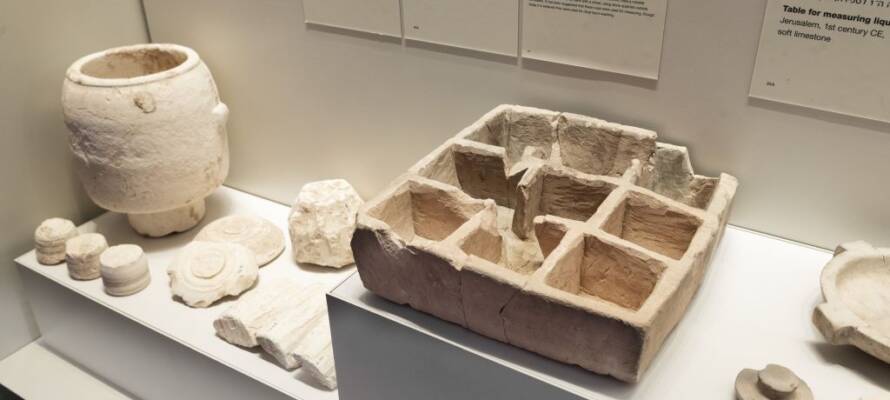The square box, measuring 30 × 30 cm and crafted from soft limestone, features nine equal-sized compartments inside.
By Pesach Benson, TPS
A 2,000-year-old multi-compartment stone container dating back to the Second Temple period is now on display to the public for the first time at the Israel Museum in Jerusalem.
Discovered during excavations by the Israel Antiquities Authority in the City of David, the box sheds light on the bustling commercial activity that characterized the ancient city.
The square box, measuring 30 x 30 cm and crafted from soft limestone, features nine equal-sized compartments inside. Found within a destruction layer amidst the ruins of an ancient store adjacent to Jerusalem’s historic Pilgrimage Road, the box bears evidence of burning, likely stemming from the tumultuous events surrounding the Great Jewish Revolt, which ultimately led to the city’s destruction.
“The discovery of this box adds to the wealth of artifacts uncovered along the Pilgrimage Road, indicating a thriving commercial hub during the Second Temple period.
From ceramic and glass vessels to measuring tools and coins, these findings paint a vivid picture of the vibrant urban market that once lined this historic thoroughfare,” said the Antiquities Authority’s excavation directors, Dr. Yuval Baruch and Ari Levy.
The box’s design and location suggest its role in facilitating commercial transactions, possibly for displaying premeasured goods. Furthermore, its presence within the confines of Jerusalem hints at the city’s unique economic and cultural landscape during ancient times.
“Second Temple Jerusalem boasted bustling markets offering both local and imported goods, catering to the needs of residents and pilgrims alike,” the researchers noted. “The discovery of this box underscores the city’s adherence to Jewish purity laws, as evidenced by the prevalent use of stone vessels, which remained impervious to ritual impurity according to Jewish law.”
Notably, similar stone boxes have been found in Jerusalem, with one notable discovery made by archaeologist Nachman Avigad in the Jewish Quarter around 50 years ago. Dubbed a “nuts and seeds bowl,” these containers have puzzled researchers regarding their exact function, with the newly uncovered specimen representing the only complete example to date.
Upon its discovery, the fragmented box underwent meticulous restoration by Victor Uziel, a conservationist from the Israel Museum Artifact Conservation Laboratory. Now, it stands proudly among a collection of artifacts from Jerusalem’s luxury houses, including colorful frescoes, chandeliers, and pottery, offering visitors a glimpse into the opulence and daily life of ancient Jerusalem during the Second Temple period.
The Pilgrimage Road is a 2,000-year-old road that was unearthed by archaeologists running from the Siloam Pool up to the Temple Mount. This road is believed to have been the main thoroughfare for Jewish pilgrims traveling to the Second Temple during ancient times.




